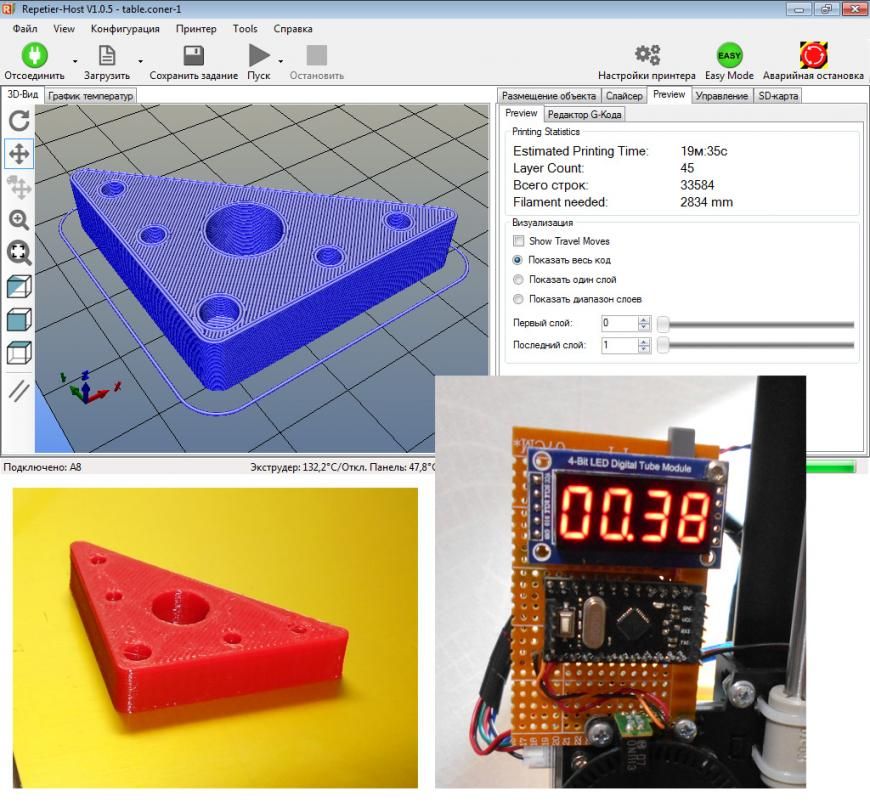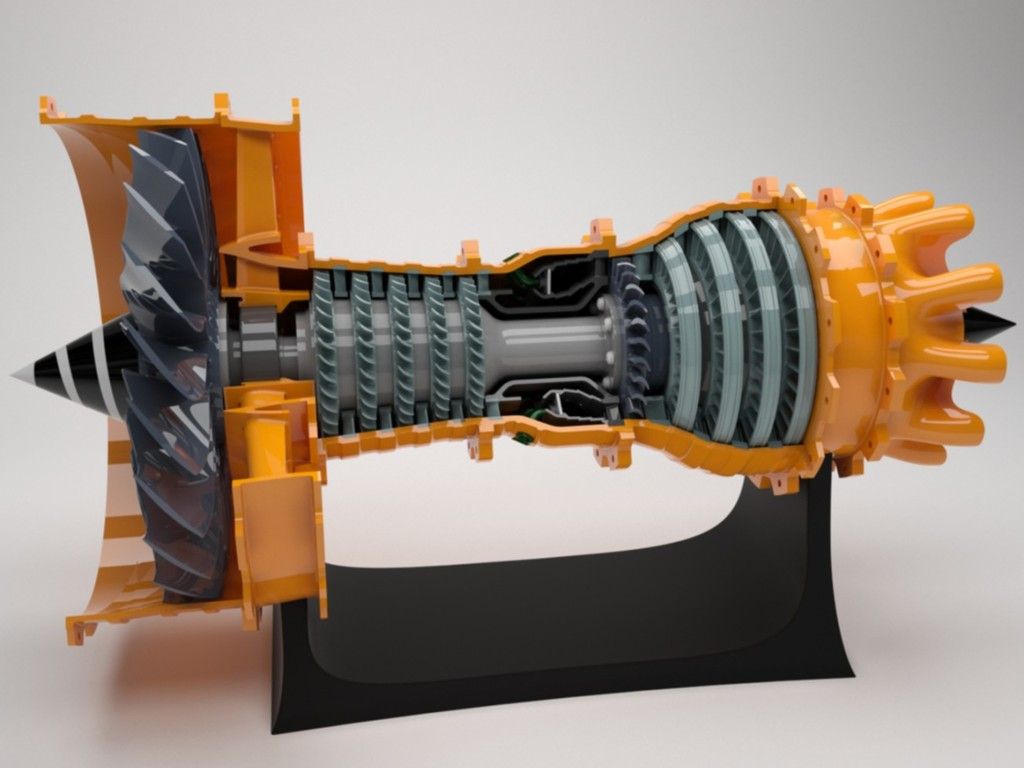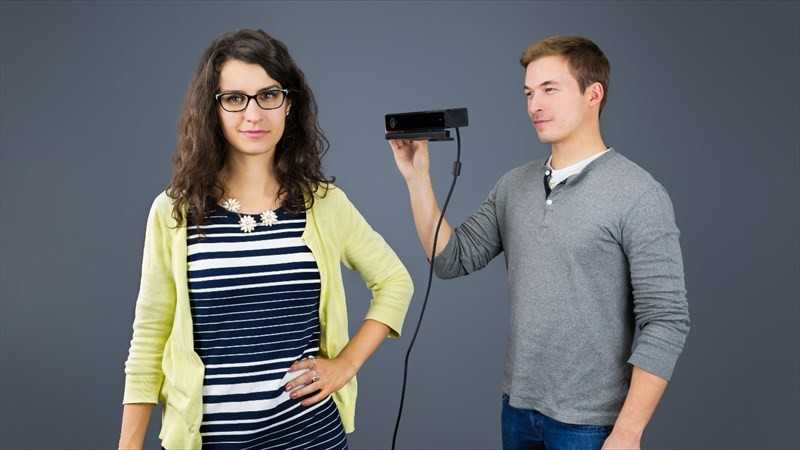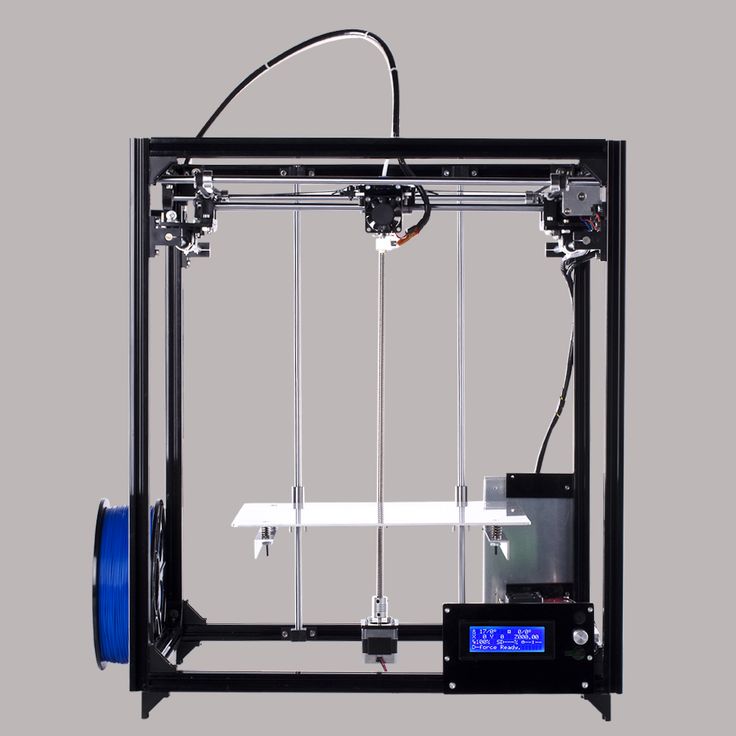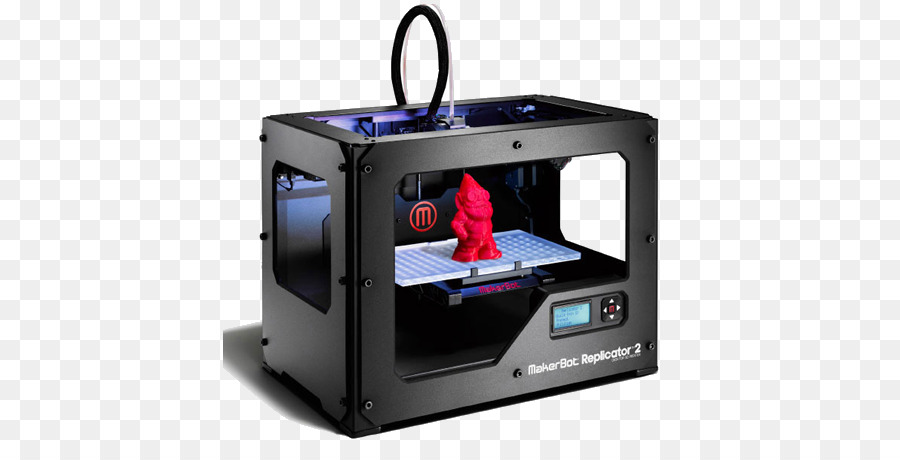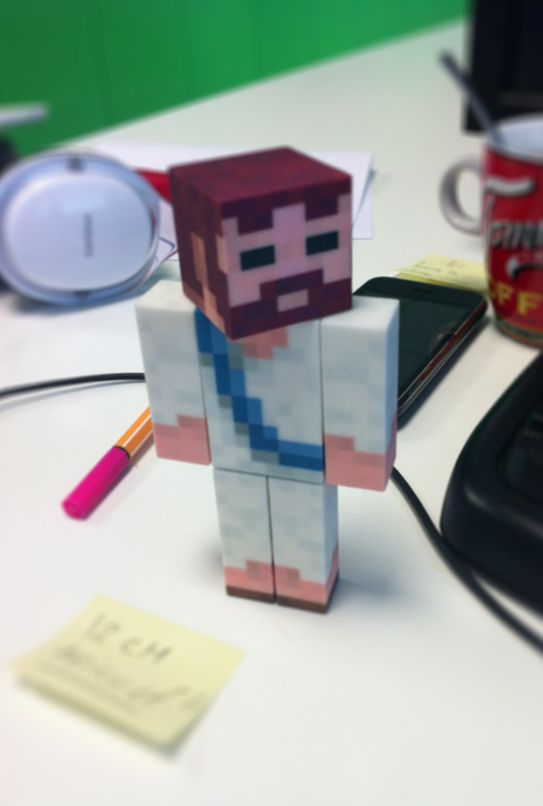Arduino 3d print projects
7 of the Coolest 3D Printed Arduino Projects
You can make some really cool things with an Arduino. And you can make some really cool things with a 3D printer. What do you get when you use them both? Some extremely cool things!
Here are seven projects that you can 3D print and power with an Arduino (and, as a bonus, a 3D printer that you can make with an Arduino).
With 3D printing, you can take your robot builds to the next level. Take, for example, this quadruped robot that looks like something from a sci-fi movie.
It’s built from 38 3D printed parts and is controlled using an old PlayStation controller. Each leg is equipped with three servos, giving it three degrees of movement: forward and back, up and down, and a bend at the joint. What this all means is that this four-legged robot can move in any direction.
With most of the hard coding work done for you, it’s just a matter of assembling the robot and uploading the correct files. But of course, this is easier said than done—luckily, the project guide (linked above) has everything that you need to build this awesome creation.
3D printing Arduino projects have pushed electronic hobby makers to make even more amazing designs and this cyborg prosthetic hand is one of them.
The 3D-printed arm has quite a nice design. On the outside, it looks like prosthetic arms that we’ve seen in real life, while on the inside its hollow body allows room for electronics. The Arduino Uno powers this creation and following the assembly of the 3D printed parts, you just need to upload the code from the project page.
Other parts you will need to include are some servos, wires, and nylon string. The latter is used in this case to move the fingers. It’s these kinds of projects that might just make a difference in the world!
Inspired by the human body, this creator set out to design the ultimate 3D printed muscle and bones set. When slotted together, these artificial muscles and supporting bone structures can move with incredible flexibility. Because it's designed to be modular too, you can create whatever robot you can imagine out of these parts!
Each 3D printed muscle is shaped like the omega symbol and can easily slot together with identical shapes, supported by 3D printed bone structures.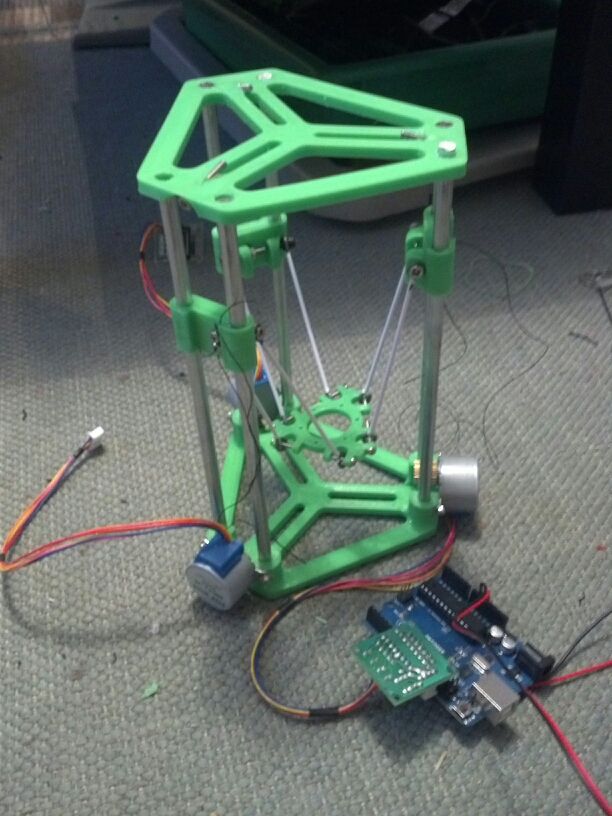 Running through all these shapes are thin plastic tubes, essentially creating a pneumatic system that can be controlled with a microcontroller.
Running through all these shapes are thin plastic tubes, essentially creating a pneumatic system that can be controlled with a microcontroller.
Included in the project guide is a tutorial for an air pressure controller. Use this alongside your Arduino to build a robot with up to 90 degrees of rotation. With a little creativity, it's a project that has a lot of possibilities!
Two of the most popular things in the geek world right now are 3D printing and drones. Why not combine the two to make a 3D-printed quadcopter drone?
By using an Arduino Nano, several affordable PCPs, a NRF24 for radio transmission, alongside motors, propellers, and a number of other parts, you can build your own little quadcopter. You might have some of the parts you need hanging around if you have an Arduino starter kit, but the rest can be bought online with ease.
You'll need to do a lot of wiring to get everything attached to the frame, but creator Yue Beifong will walk you through it with pretty clear explanations of what you need to do.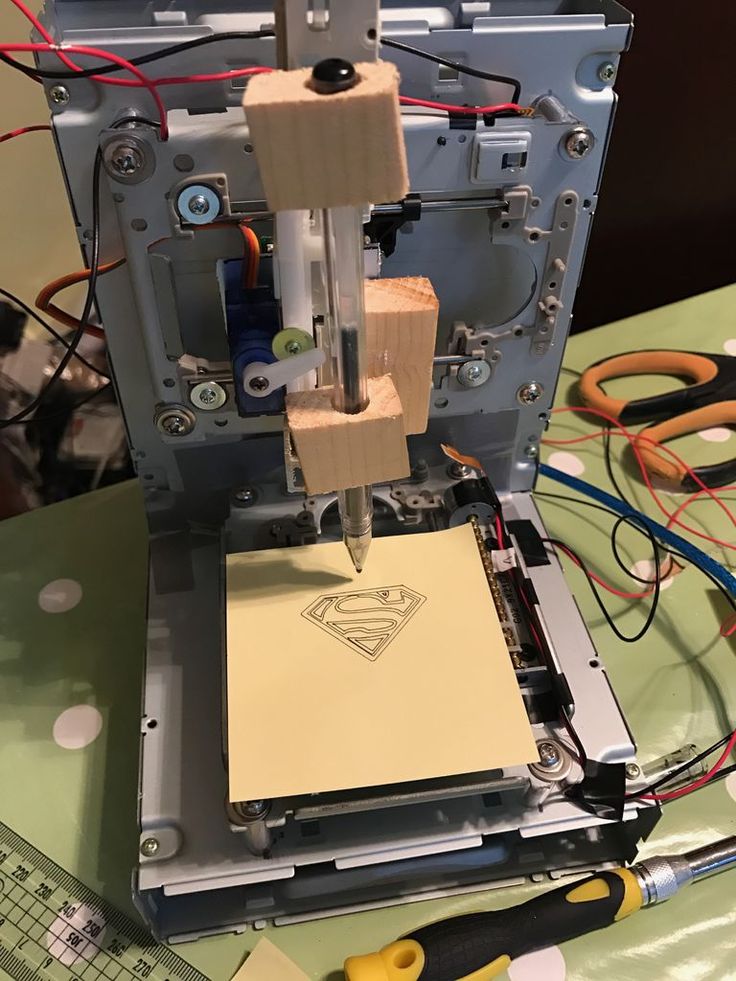 The project includes the 3D printer files, so you'll just need a printer to get everything to work.
The project includes the 3D printer files, so you'll just need a printer to get everything to work.
For this project, you'll need more parts than the previous two, including a bunch of LEDs, capacitors, an oscillator, transistors, and an AC mains switch and connector.
The result, however, is one of the coolest lamps that we have seen.
Once you've collected the various parts, you'll need to use some basic electronics skills to wire up the 3D printed double-helix to a rotating motor, like one from a microwave. The full guide (linked above) takes you through each step in detail. When you're done, you’ll have a rotating strand of glowing DNA!
A word of caution: because this one involves mains power, be extra careful when you're working on it!
Pip-Boy from Fallout 4 has been a popular DIY build ever since fans got a first look at it!
It requires quite a few unique parts, including a gyroscope, power pack, a capacitive display with driver board, flashlight, pressure sensor, methane sensor, and a multi-part 3D printed case.
You'll need to make a custom I/O board to get this project working, but in the detailed guide (linked above), the steps for making it are very clear. If you are after a later version of the Pip-Boy, you can also have a look at this YouTube video which covers a beautiful 3D printed design with great painted details.
It's a pretty involved project, but it absolutely can't be beaten as a Halloween costume, cosplay accessory, or conversation piece!
If you're trying to build your own personal makerspace, a CNC mill is a great addition. The project page notes that it's accurate enough to cut and drill circuit boards, so it should be good for any milling project you want to take on. It requires a large number of 3D printed parts, so you may want to consider using a printing service, but it wouldn't be too difficult to print your own.
You'll also need quite a large selection of parts, including a lot of fasteners, some bearings, a relay module, and DC connector, some metal parts for the surface, and an Arduino to run everything. It's quite a project, but then again, having your own CNC mill is quite a handy thing!
It's quite a project, but then again, having your own CNC mill is quite a handy thing!
Don't Have a 3D Printer? Build One!
If you don't have a 3D printer, there are still a few options for getting the 3D printed parts you'll need for these projects. You could borrow a 3D printer, use one at a local makerspace, or use a 3D printing service. Alternatively, you can even build an Arduino-powered 3D printer for $60!
The EWaste 3D Printer is a micro printer and might not be big enough to print the parts for some of the larger projects above. But it's a really great home project that is affordable and environmentally conscious, as it uses mostly recycled computer parts.
You'll need a couple of old CD or DVD drives, a floppy disk drive, a small stepper motor, a power supply, an extruder, and a few extras, but overall it’s a surprisingly simple project.
You'll need to do quite a bit of calibrating and basic electronics work, but the end product is fantastically functional for what it's made out of.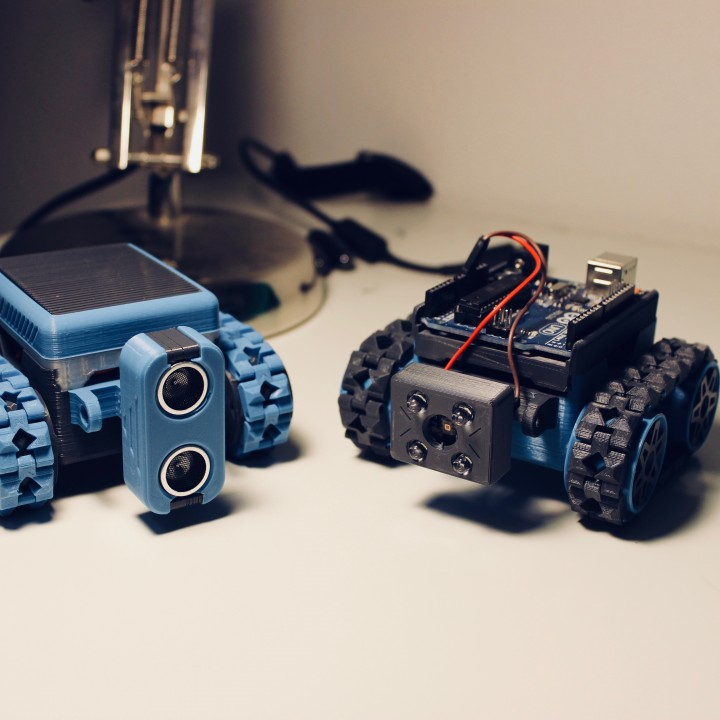
Build Your Next Arduino Project with 3D Printing
Combining 3D printing and Arduino is a no-brainer, and the projects above should give you a good idea of the limitless potential that it provides. Whether you have your own 3D printer, you use someone else's, or you use a 3D printing service, you can build your own project from start to finish.
💾 Best STL files 3D printed for Arduino & Raspberry Pi・Cults
💾 Best STL files 3D printed for Arduino & Raspberry Pi
Download 3D files of accessories for Arduino & Raspberry Pi
Discover a selection of the best STL files to use with a 3D printer in order to create great projects coupled with an Arduino or Raspberry Pi card. Turn the corner and bring your 3D printing to life with electronic components!
Iron Man MK6 MK 6 Suit
Free
Han Solo in Carbonite - Raspberry Pi 2/B+ Case
Free
The Animated Pixel Lamp
Free
BCN3D MOVEO - A fully OpenSource 3D printed Robot Arm
Free
SMARS modular Robot
Free
Terminator - ARRIVAL - by SPARX
Free
DIY 3D Printed Dremel CNC
Free
Poppy Humanoid
Free
DIY Alien vs.
 Power Loader fight with LED lights
Power Loader fight with LED lightsFree
Gyro Winder / Watch Winder
€2.50
RGB LED Lamp
Free
Terminator – THE FACTORY - by SPARX
Free
Arduino Uno Snug Case
Free
Raspberry Pi 3 (B/B+), Pi 2 B, and Pi 1 B+ case with VESA mounts and more
Free
Proteus Solder Station - 80mm/120mm fan
Free
Snes Mini Raspberry Pi
Free
SMARS V4 vertical Ultrasonic
Free
Bumper for Arduino Uno Clone
Free
Malolo's screw-less / snap fit Raspberry Pi 4 Model B Case & Stands
Free
Guardian Robot Hackable – Bottom Remix
Free
CNC Machine
Free
LED bridge lamp
Free
Raspberry Pi 3 (2 or B+) case
Free
Shovel DLC for SMARS
Free
PropMaker LightSaber
Free
Arduino Mega 2560 Snug Case
Free
UFO Abduction Lamp with blinking lights
Free
3D Printed Case for Arduino Uno, Leonardo.

Free
Arduino Uno R3 Snug Case
Free
RC Soviet tractor DT-75 Kazakhstan (1\10 scale)
Free
Triple A connector + connector extender for SMARS
Free
Otto DIY build your own robot
Free
OctoPrint Raspberry Pi Rig 3.5" PiTFT Touch Display
Free
Arduino box
Free
3A batteries mod for SMARS
Free
BOARDUINO – ARDUINO ALL IN ONE BREADBOARD STAND
Free
SMARS QUAD MOD
Free
Mini plotter (CNC Plotter) Arduino
Free
Raspberry Pi 3 B+ enclosure
Free
Arduino Mega 2560 holder
Free
Kame: 8DOF small quadruped robot
Free
7in Portable Raspberry Pi Multi-Touch Tablet
Free
Malolo's screw-less / snap fit Raspberry Pi 3 Model B+ Case & Stands
Free
Raspberry Pi Pipboy 3000 MKVI
Free
Twitch Drone Chassis for ZeroBot
Free
Particle Raspberry Pi Case
Free
Bubble Maker
Free
Drone/Quadcopter frame - Arduino drone - Ludwik Drone
Free
Back to the Future Jules Verne Time Train with lights and smoke
ARDUINO UNO PORTABLE LAB CASE
Moving T-800 Terminator Skull
Malolo's screw-less / snap fit Raspberry Pi 3 Model B+ Case & Stands
Here is our selection of the best STL files for Arduino & Raspberry Pi, all these accessories are from the 3D file library Cults and are perfectly 3D printable.
This collection includes free and paid 3D files of accessories to use with your Arduino or Raspberry Pi card. The many 3D models were created by our community of members 3D designers but also big fans of electronics and Do It Yourself. You will find here many projects ranging from simple storage for your card to the most incredible robot. There are, for example, automated robotic arms, smart cars, stopwatches, games, musical instruments, robots, etc.
Just download 3D models and integrate your Arduino or Raspberry Pi card into it. Installation instructions and the code for using the electronic component are provided. This necessarily requires more work than a simple object 3D printed, but you will have the real satisfaction of having successfully completed a project, of having coded it and of being able to really make it work.
Cheap Arduino 3D Printer||Arduino-diy.
 com
com This article describes the construction of a 3D printer that costs around $60-70 (probably the cheapest concept in the world).
This 3D printer works with the cheapest motors on the market - 28Byj-48, Electronics - Ramps 1.4 controlled by Arduino.
The author of the project is a 16-year-old guy from Germany.
3D printer specifications:
Working space: 10x10x10 cm;
Speed: 20 mm/s;
Resolution (accuracy): 0.2 mm.
P.S. Under each section, in accordance with the table of contents of the article, photos are posted as a visual instruction
Mechanical part
MDF boards:
-1x 30x34 cm (Base).
-2x 6x4 cm.
-1x 34x6 cm.
-1x 15x4 cm.
- 2 GT2 pulleys + 1 m GT2 timing belt.
-10 bearings 624.
-1 pulley Mk8 for drive.
-1 PTFE tube.
Smooth rods for guides with a diameter of 8 mm:
- 2, 22 cm long.
- 4 x 17.5 cm long.
Local hardware store:
- 1 shaft with M5 thread, which you will cut into 2 pieces.
-2 M5 hex nuts.
- 8 screws M3x16 mm.
-6 screws M3x 25 mm.
-4 screws x M4x45 mm.
-2 screws M4x60 mm.
-4 screws M4x20 mm.
-20 M4 hex nuts.
-10 M3 hex nuts.
-12 small screws.
Electronics
-1 Arduino Mega 2560 board + Ramps 1.4 + 4 A4988 stepper motor drivers.
-4 stepper motors 28byj-48.
-3 optical limit switches.
-1 Nema 17 stepper motor (we also order from Ali or Ebay. Such drives cost about 10 dollars).
Extruder tip:
-1 E3D-V5 Aliexpress extruder
or more expensive but with cooling
-1 E3D-V6 Aliexpress extruder.
Knots to be printed on a 3D printer
Download the latest versions of 3D models of units to be printed from the link: Thingiverse
.
2 "Z-Motor" parts
2 "Y-End" parts
2 "X-End" parts
1 "X-Carriage" part
1 "Motor" part
1 "Hotend" part
1 piece "Hotend Clamp"
Download mechanism for extruder here: Thingiverse.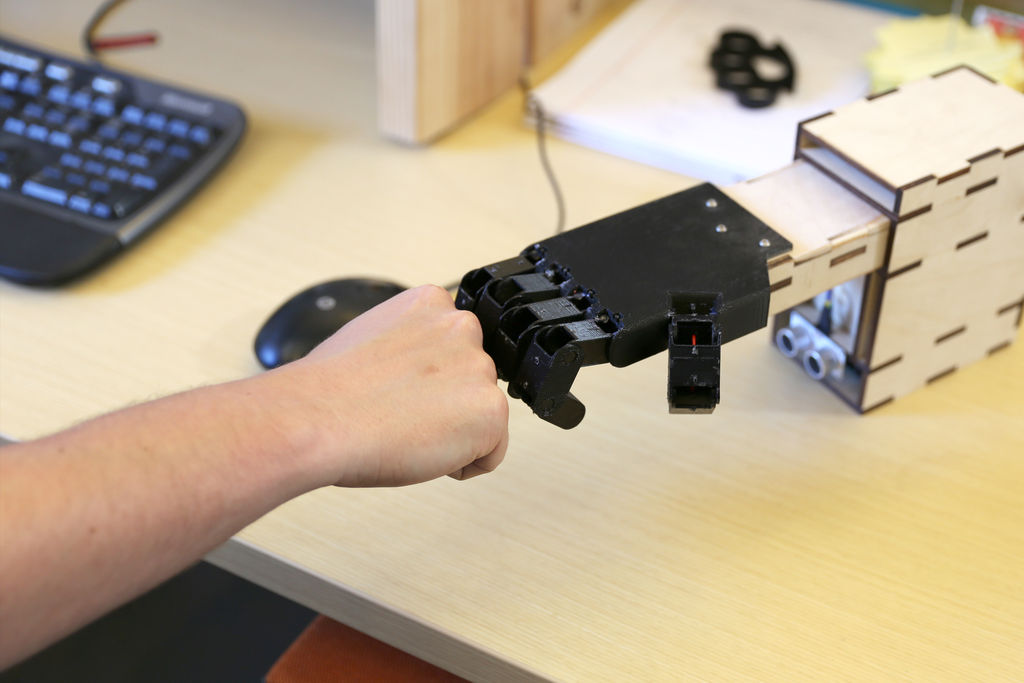
28BYJ-48 Stepper Motor Modification
In order to convert the 28BYJ-48 stepper motor from unipolar to bipolar, you need to open the plastic cover.
Then remove the red cable and open the contact track from it as shown in the figure.
Now at the other end is the output that you will connect to the Ramps, arrange the pins as follows:
blue--yellow--orange--pink
With this little modification, you can connect these motors directly to the pins provided on the shield for Arduino Ramps 1.4
Y Axis
First you need to glue two wooden boards together.
Then place the printed parts "Motor", "Z-Motor" on the wooden boards.
Then fix the printed parts with the screws.
Next step: fit the motors into the slots and then the LM8UU bearings.
Install the pulley on the motor and the 624zz bearings next to it.
Use plastic ties to secure LM8UU bearings.
Next - install two guide rails 17.5 cm long with a diameter of 8 mm.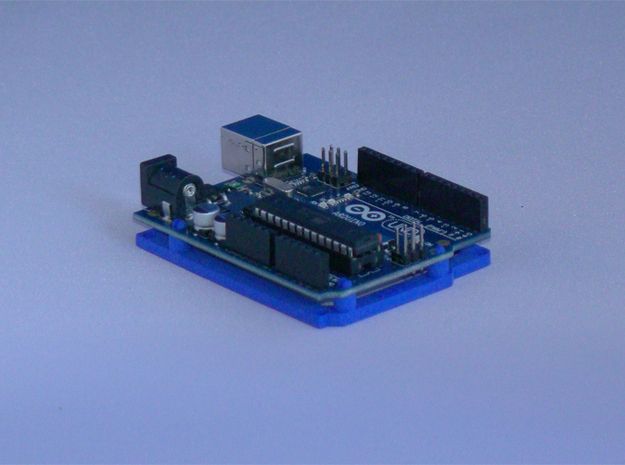
Finally, pull the belt through the "Y-ends" and install the limit switch.
X-Axis
For X-Axis you need:
Install two M4x45mm bolts in the "X-End".
Connect the motor as shown in the illustrations.
Tension the belt and install the limit switch.
Mount the extruder with two screws M3x25 and tighten with nuts.
Z Axis
In order to assemble the Z axis, you need:
Install LM8UU bearings in "X-Carriage" + "X-Ends".
Post install "X-Ends" + "X-carriage" on rails 17.5 cm (X-Axis) and 21cm (Z-Axis).
After that it is necessary to connect the threaded shaft with the motor
Printing table
We drill four holes with a diameter of 3 mm in a wooden plate 20x13 cm.
After that we tighten 4 bolts M3x25.
We assemble the entire 3D printer
We assemble it in accordance with the figures below. There is no point in giving additional explanations. The main thing is that the previous steps are correctly implemented.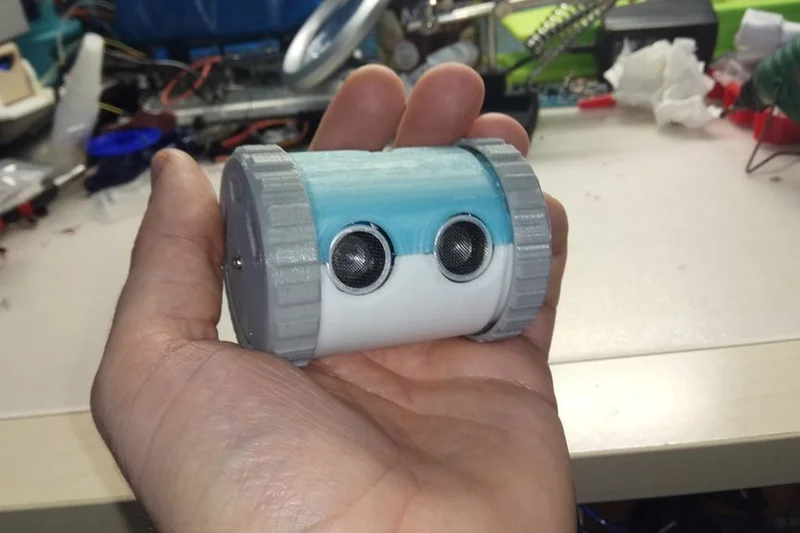 In this case, there should be no problems.
In this case, there should be no problems.
We connect electronics to the 3D printer
We connect electronics (including Arduino) in accordance with the figure below.
Software for Arduino
You can download the Arduino IDE configuration file from www.repetier.com.
This should be enough. You can carry out direct adjustment for your received design, dimensions, etc.
Photo of the printing process and results
After some calibration, good cube samples were printed with dimensions of 1x1x1 cm. As a result, there is a significant displacement of the layers.
So I recommend setting the A4988 to 1/16 microstepping and adjusting the current to the minimum value.
You can also play around with the Arduino firmware to get better results.
Leave your comments, questions and share your personal experience below. In the discussion, new ideas and projects are often born!
5 Coolest Arduino 3D Printed Projects
You can do some really cool things with Arduino.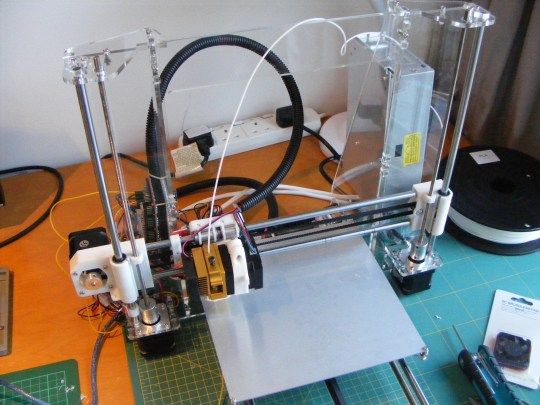 And you can make some really cool stuff with a 3D printer. . What do you get when you use them both? Some very cool stuff. Here are 5 projects you can 3D print and power with an Arduino (and, as a bonus, a 3D printer you can make with an Arduino). Check them out and post your favorites in the comments below!
And you can make some really cool stuff with a 3D printer. . What do you get when you use them both? Some very cool stuff. Here are 5 projects you can 3D print and power with an Arduino (and, as a bonus, a 3D printer you can make with an Arduino). Check them out and post your favorites in the comments below!
The two most popular things in the geek world right now are 3D printing and drones. Why not combine them to create a 3D printed quadcopter drone? Using a radio, compass, motors, ESCs, propellers, and a host of other parts, combined with an Arduino frame and 3D printing, you can build your own little quadcopter. You may have some of the parts you need if you have an Arduino starter kit, but the rest can be easily purchased online.
You will need to do a lot of wiring to attach everything to the frame, but Nolan5454's instructions walk you through this with pretty clear explanations of what you need to do. And it includes 3D printer files, so you just need a printer to make it work.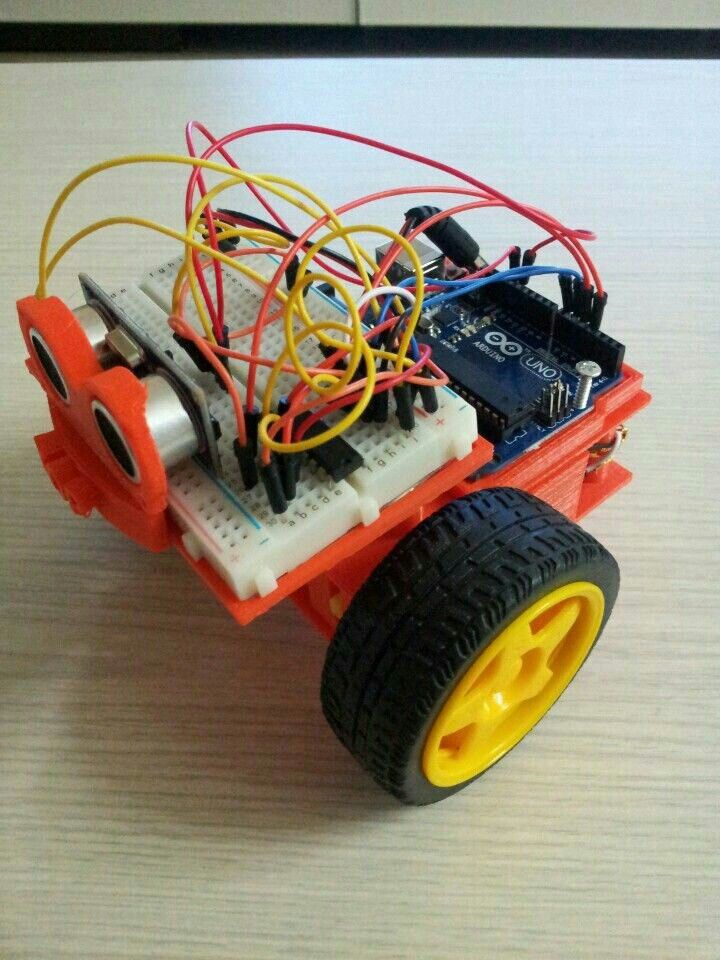 When it's all together, you can control it via GPS or FM transmitter.
When it's all together, you can control it via GPS or FM transmitter.
Robots Arduino robots are a lot of fun and you can get a lot of cool kits to make them. But if you want to do it all yourself, this set of instructions from davidhrbaty will help you 3D print this little guy and you can plug in an Arduino Nano to make him run. The robot can be controlled by IR remote control, automatically by obstacle detection, or in "monitoring mode" which uses an ultrasonic sensor.
In addition to the body printout, you will need an Arduino Nano, some servos, an IR receiver and remote control, an ultrasonic sensor, a speaker, and some AAA batteries. Luckily, almost all of these items are almost guaranteed to come in the starter kit, so you probably already have them. After that, you just need to quickly print and set up the motors.
I must say that this is probably my favorite project of all. It's like a weaker version of a lava lamp (didn't think you'd ever heard that, did you?).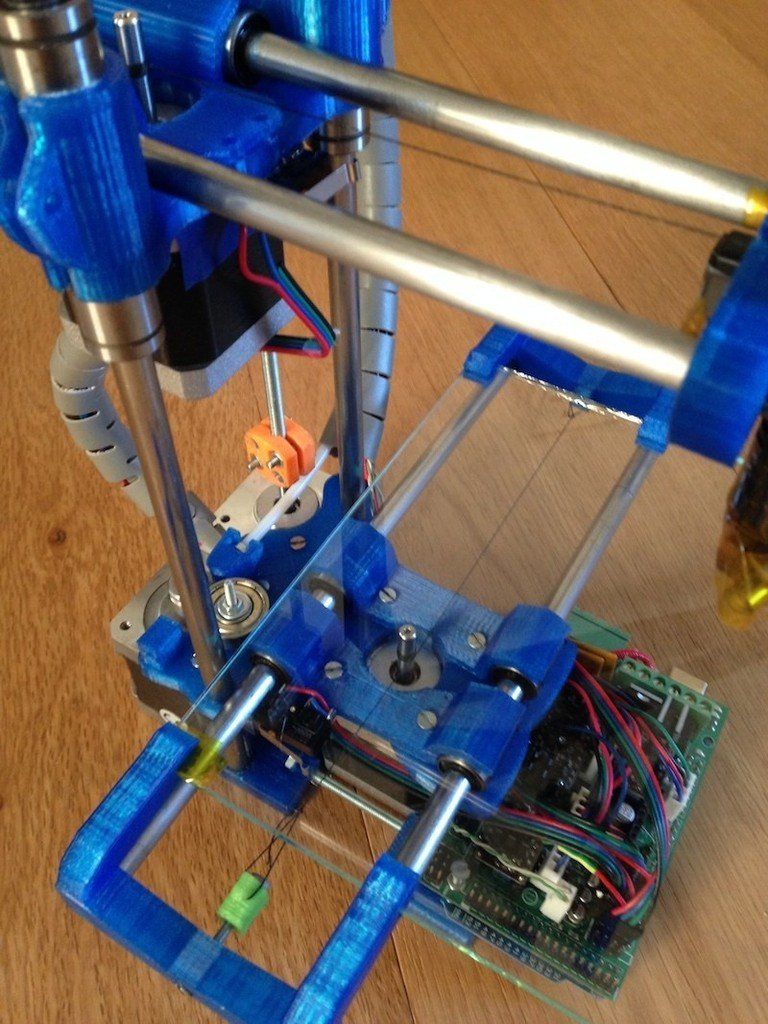 For this project, you will need more parts than the previous two, including a set of LEDs, capacitors, an oscillator, transistors, as well as a power switch and an AC connector. Since this requires mains power, be especially careful when working on this!
For this project, you will need more parts than the previous two, including a set of LEDs, capacitors, an oscillator, transistors, as well as a power switch and an AC connector. Since this requires mains power, be especially careful when working on this!
After you have assembled the various parts, you need to use some basic electronics skills to connect the double helix double helix plate to a rotating motor such as a microwave oven and connect the mains power. eLab's Instructables walks you through each step in detail. When you're done, you have a spinning strand of glowing DNA!
And if you like the idea of making your own lava lamp, you can do that too.
This project, and a few others like it, have been making the rounds since Fallout 4 came out, and you can see why: it's a really cool little gadget! This requires quite a few unique parts, including: a gyroscope, a power supply, a capacitive display with a driver board, a flashlight, a pressure sensor, a methane sensor, and a 3D multi-component housing.
You will need to build your own I/O board for this project to work but at page Instrumentables in Sweatman has clear instructions on how to do this, as well as a very detailed step by step guide for all other steps. This is quite a complex project, but it cannot be beaten as a Halloween costume, cosplay accessory. , or part of a conversation!
If you are trying to create your own creative space. Like , a CNC mill is a great addition. Liquid Hand Wash notes in Instructables that it is accurate enough for cutting and drilling PCBs, so it should be suitable for any milling project you want to do. This requires a large amount of 3D printed parts, so you might want to consider using a printing service, but it won't be too hard to print your own.
You will also need a fairly large selection of parts, including a lot of fasteners, some bearings, a relay module and DC connector, some metal parts for the surface, and an Arduino to run everything.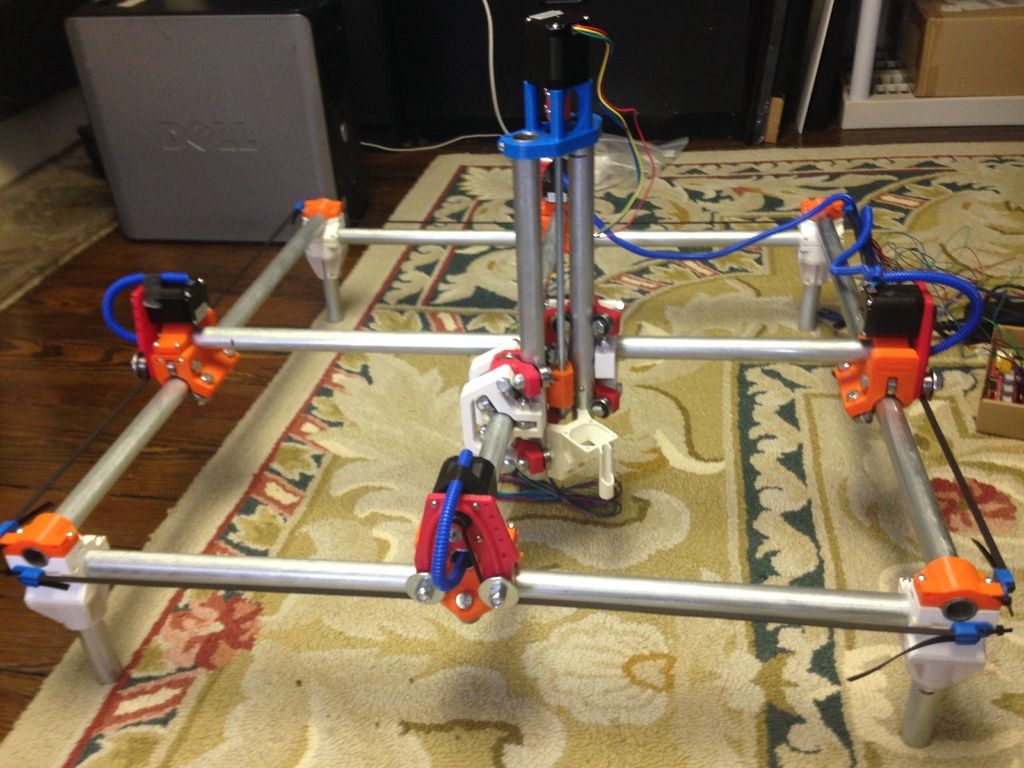 Some of the part links don't work in the Instructable, but they should all be easy to find. This is a real project, but again, having your own CNC mill is very convenient!
Some of the part links don't work in the Instructable, but they should all be easy to find. This is a real project, but again, having your own CNC mill is very convenient!
Don't have a 3D printer? Build One!
If you don't have a 3D printer, you have several options for getting the 3D print parts you'll need for these projects: you can buy an affordable one, borrow one, use one at your local makerspace local hackerspace local hackerspace , use a 3D printing service, or if you really want to make it yourself, build it yourself. You can even build an Arduino 3D printer for $60!
This particular 3D printer, the $60 EWaste 3D printer, is very small and might not be big enough to print parts for some of the larger projects above, but it's a really cool home project, very affordable and environmentally friendly safe as it uses mostly recycled parts. You'll need a couple of old CD or DVD drives, a floppy drive, a small stepper motor, a power supply, an extruder, and a few extras, but this is actually a surprisingly simple project.